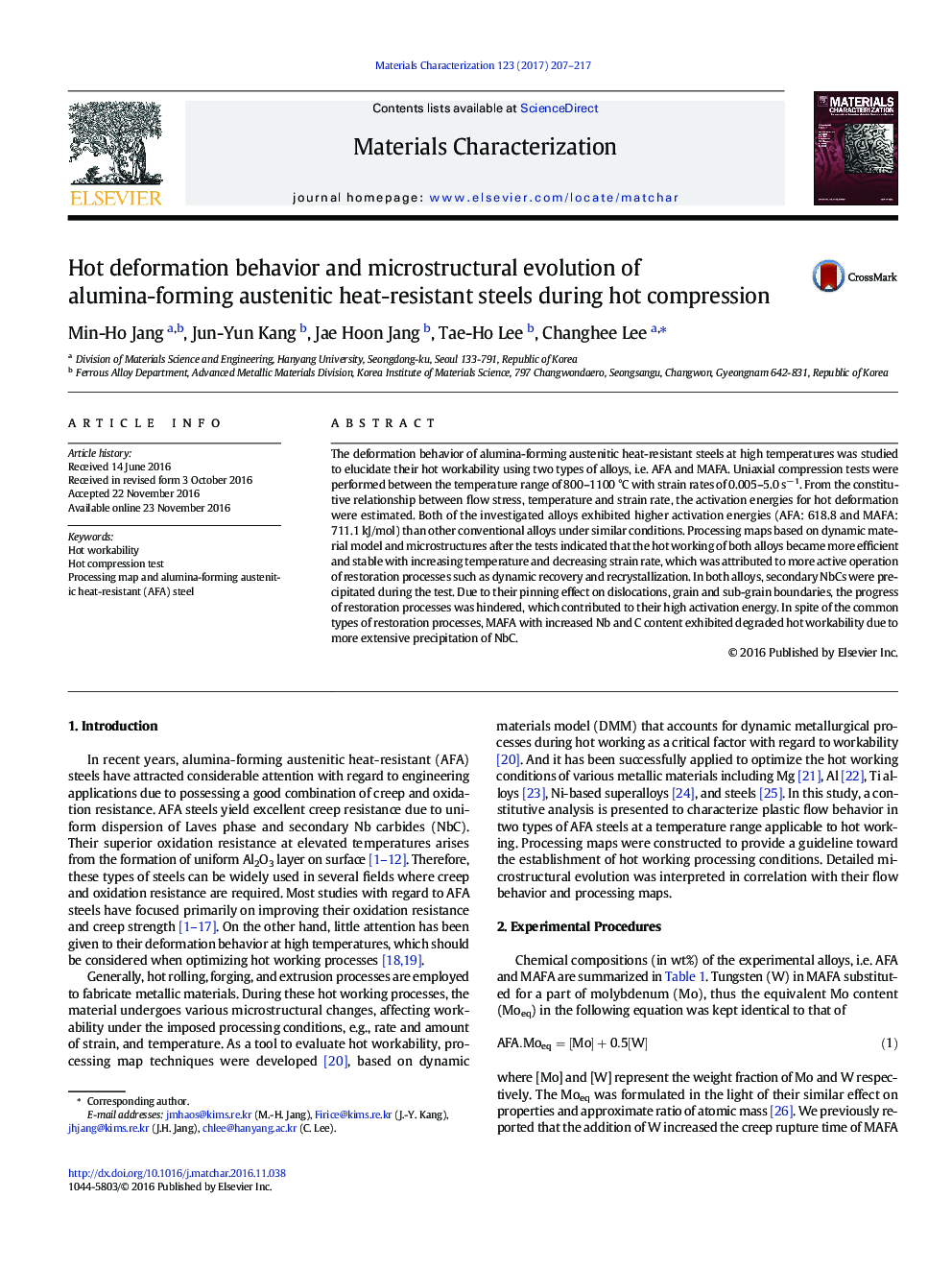| Article ID | Journal | Published Year | Pages | File Type |
|---|---|---|---|---|
| 5454958 | Materials Characterization | 2017 | 11 Pages |
Abstract
The deformation behavior of alumina-forming austenitic heat-resistant steels at high temperatures was studied to elucidate their hot workability using two types of alloys, i.e. AFA and MAFA. Uniaxial compression tests were performed between the temperature range of 800-1100 °C with strain rates of 0.005-5.0 sâ 1. From the constitutive relationship between flow stress, temperature and strain rate, the activation energies for hot deformation were estimated. Both of the investigated alloys exhibited higher activation energies (AFA: 618.8 and MAFA: 711.1 kJ/mol) than other conventional alloys under similar conditions. Processing maps based on dynamic material model and microstructures after the tests indicated that the hot working of both alloys became more efficient and stable with increasing temperature and decreasing strain rate, which was attributed to more active operation of restoration processes such as dynamic recovery and recrystallization. In both alloys, secondary NbCs were precipitated during the test. Due to their pinning effect on dislocations, grain and sub-grain boundaries, the progress of restoration processes was hindered, which contributed to their high activation energy. In spite of the common types of restoration processes, MAFA with increased Nb and C content exhibited degraded hot workability due to more extensive precipitation of NbC.
Keywords
Related Topics
Physical Sciences and Engineering
Materials Science
Materials Science (General)
Authors
Min-Ho Jang, Jun-Yun Kang, Jae Hoon Jang, Tae-Ho Lee, Changhee Lee,
